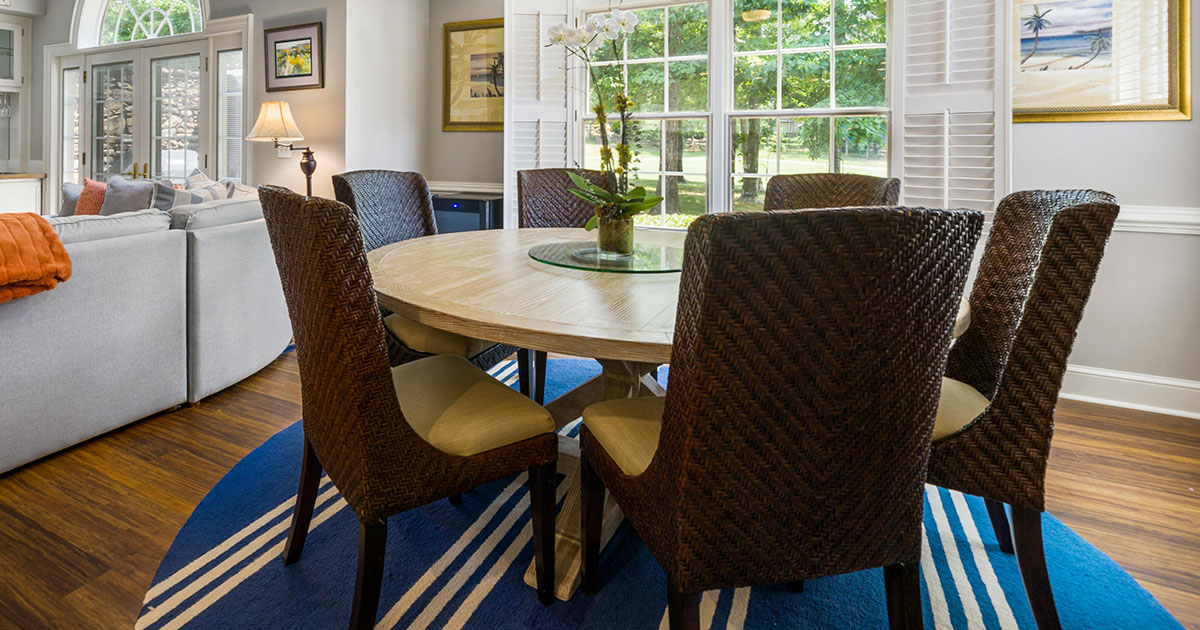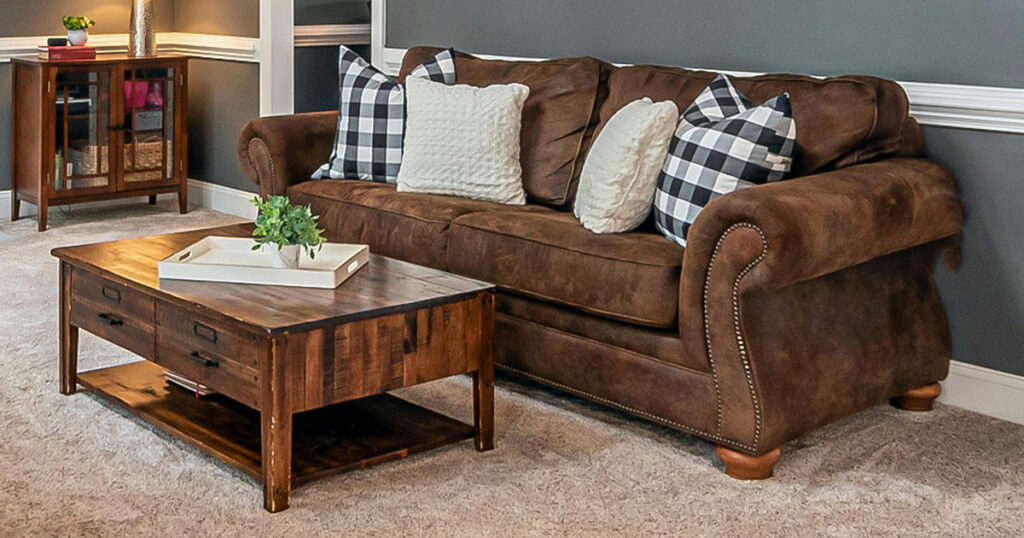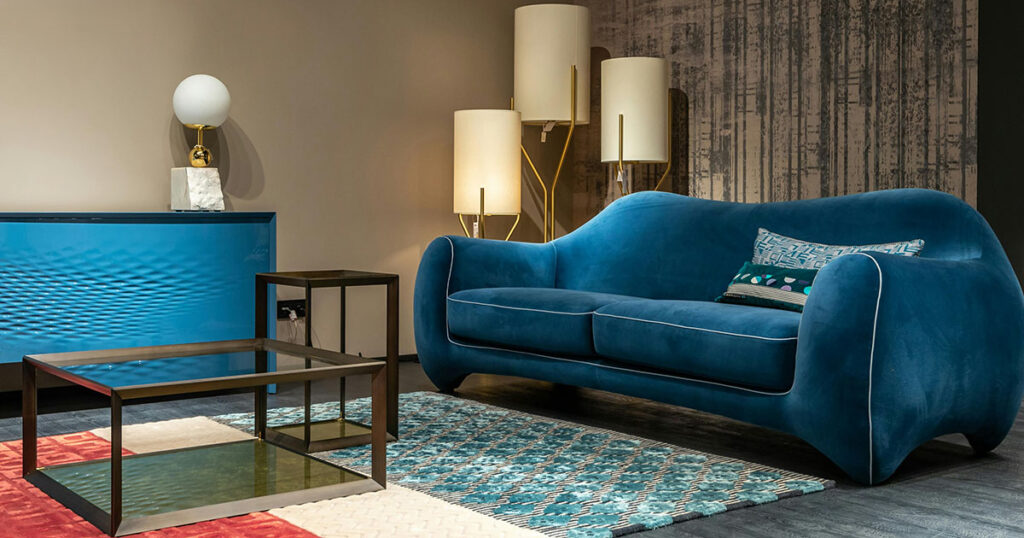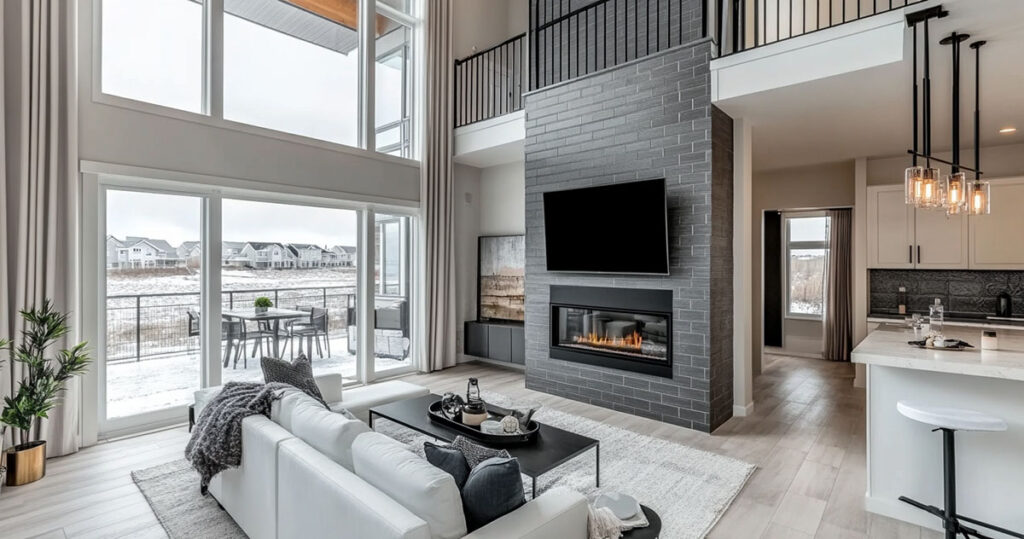Looking to add warmth, style, and definition to your dining space?
A well-chosen tufted rug might be exactly what you need.
These plush, comfortable floor coverings can transform your dining room from bland to beautiful while providing practical benefits too.
Let’s explore everything you need to know about selecting and styling tufted rugs for your dining area.
What Are Tufted Rugs?
Tufted rugs are created by punching yarn through a fabric backing to form a pile, rather than tying individual knots.
This process can be done by hand with a tufting gun or by machine, following a design mapped onto the backing.
Once the yarn loops are inserted, they can remain as loops or be cut to create a plush surface. A secondary backing (often canvas or cloth) is then glued on to secure the tufts in place.
This construction method makes tufted rugs faster to produce than hand-knotted rugs, available in countless designs and colors, generally more affordable than hand-knotted alternatives, and soft and cushioned underfoot.
Why Tufted Rugs for Dining Rooms?
Your dining room serves as a gathering place for meals, conversations, and memories. A tufted rug can enhance this space in several ways:
Decorative Advantages
Tufted rugs define the dining zone in open floor plans, visually separating your dining area from other spaces.
They add color and pattern, introducing personality and tying together your design scheme.
The plush texture creates warmth, softening the look of hard surfaces like wood floors and dining tables. With designs ranging from traditional to contemporary, tufted rugs complement any style.
Practical Benefits
Beyond aesthetics, tufted rugs offer cushioned comfort, providing a soft surface underfoot while seated.
They absorb sound from chair movement and conversation, creating a more pleasant dining experience. The rug also protects your floors against scratches from chair legs and adds insulation, especially on tile or hardwood.
Choosing the Perfect Tufted Rug for Your Dining Space
Size and Placement
The most common mistake homeowners make is choosing a rug that’s too small. For proper dining room placement, your rug should extend at least 24 inches beyond each side of the table.
This allows chairs to remain on the rug even when pulled out.
For a 6-seat rectangular table, consider an 8’×10′ rug. For an 8-seat table, a 9’×12′ works better.
Round tables pair beautifully with round rugs, while rectangular tables work best with rectangular rugs. Leave approximately 12-18 inches of floor visible around the rug’s edge to frame it nicely.
Materials That Work
The material of your tufted rug affects both its appearance and performance in a dining setting.
Wool offers natural resilience that bounces back from furniture impressions, some stain resistance thanks to lanolin, and a soft, warm feel with excellent durability.
Expect some initial shedding, but wool remains a sustainable option.
Synthetic fibers like polypropylene offer excellent stain resistance for water-based spills. Polyester provides vibrant colors at affordable prices, while nylon delivers superior durability. These options are less heat-resistant than natural fibers but budget-friendly.
Natural fiber blends like wool with viscose add elegant shine, while cotton blends offer softness and durability. Recycled materials provide eco-friendly options for the environmentally conscious.
For dining rooms where spills happen, wool and polypropylene tend to perform best due to their stain-resistant properties.
Pile Height Considerations
While tufted rugs are known for their soft pile, consider practical factors for dining spaces. Medium to low pile makes it easier to move chairs in and out without catching or wobbling. Avoid very thick or shaggy rugs, as these trap crumbs and make cleaning difficult.
Decorative Styles to Consider
Tufted rugs come in virtually endless design options. Traditional Persian and Oriental-inspired designs bring timeless elegance to formal dining spaces, featuring center medallions with intricate borders, rich jewel tones, and detailed motifs.
For updated spaces, modern and contemporary styles offer bold geometric patterns, abstract designs with artistic flair, solid colors with textural interest, or minimalist stripes.
Transitional styles blend traditional and contemporary elements with updated classic patterns in modern color palettes, subtle designs that don’t overwhelm, and neutral bases with accent colors that tie to your decor.
When selecting colors, coordinate with your dining set rather than exactly matching it.
Consider stain-hiding patterns or mid-tone colors that conceal spills better than solid light colors. Lighter colors make small dining rooms feel larger, while darker colors can make large rooms feel cozier. Neutral bases with accent colors allow for seasonal decor changes.
Maintaining Your Dining Room Rug
Tufted rugs in dining areas require special care to stay looking their best. Vacuum 1-2 times weekly to remove crumbs and prevent them from settling deep in the pile. Rotate the rug every 6-12 months to ensure even wear, and use felt pads on chair legs to reduce friction and protect the fibers. A quality rug pad underneath provides stability and extends the rug’s life.
When spills happen, blot immediately with clean, dry cloths—never rub! For food spills, gently scoop up solids first, then use appropriate cleaners based on your rug’s material. Avoid soaking through to the backing, as this can damage the adhesive. Consider applying a fabric protector spray to add stain resistance.
Have your dining room rug professionally cleaned every 1-2 years, specifying that it’s a tufted rug when arranging cleaning. Choose services that use controlled moisture techniques rather than steam cleaning, and monitor the backing periodically for signs of deterioration.
Selecting by Dining Style
Your family’s dining habits should influence your rug choice. For formal dining rooms used primarily for special occasions, higher pile luxury tufted rugs work well with lighter colors and more delicate patterns. Wool with silk accents adds elegance.
For everyday family dining in busy households, choose durable, easy-to-clean materials like wool or polypropylene in darker colors or patterns that hide crumbs and small stains. Medium to low pile allows for easier chair movement and cleaning.
With young children at the table, consider machine-made tufted rugs that offer affordability for eventual replacement, stain-resistant synthetic fibers, patterns that camouflage inevitable spills, and temporary rug protection products for under high chairs.
FAQs About Dining Room Rugs
Will a tufted rug trap food and become difficult to clean?
With regular vacuuming and prompt attention to spills, a medium-pile tufted rug can stay clean and fresh. Lower pile heights are easier to maintain in dining settings.
How do I protect my rug during big gatherings?
For special occasions with many guests, consider a clear plastic rug protector that can be placed temporarily over your tufted rug.
Should the rug extend under a buffet or sideboard?
Generally, the rug should define just the table and chairs area, not extending under other dining room furniture.
Can I use a tufted rug over carpet?
Yes, though you’ll want a thinner rug that won’t create a tripping hazard and may need a special non-slip pad designed for carpet-to-rug use.
Making Your Final Selection
When you’ve narrowed down your options, test fabric samples from your chairs, curtains, and wall colors against rug options.
Consider how the rug looks under your dining room lighting and think about long-term compatibility with your evolving style.
Will this rug work year-round or feel too heavy/light in certain seasons?




